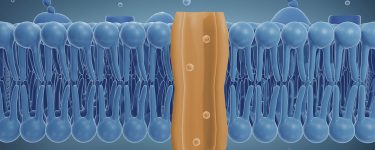Ion Channel Drug Discovery – Recent Advances in Novel Non-Opioid Pain Research
15 May 2024
Shares
- Like
- Digg
- Del
- Tumblr
- VKontakte
- Buffer
- Love This
- Odnoklassniki
- Meneame
- Blogger
- Amazon
- Yahoo Mail
- Gmail
- AOL
- Newsvine
- HackerNews
- Evernote
- MySpace
- Mail.ru
- Viadeo
- Line
- Comments
- Yummly
- SMS
- Viber
- Telegram
- Subscribe
- Skype
- Facebook Messenger
- Kakao
- LiveJournal
- Yammer
- Edgar
- Fintel
- Mix
- Instapaper
- Copy Link
Watch this webinar to learn about recently published research toward the advancement of non-opioid analgesics targeting the Nav1.8 ion channel, a validated pain target primarily found in peripheral nociceptors.


Watch this webinar on-demand now!
Ion channels represent a key target class for therapeutic development in numerous diseases including epilepsy, cystic fibrosis, movement disorders, cardiac arrhythmias, renal disorders and pain. The opioid epidemic highlights the urgent need for new non-addictive analgesics for the treatment of pain disorders. The voltage-gated sodium channel Nav1.8 is a genetically- and pharmacologically-validated pain target in humans that is involved in transmitting pain signals in the peripheral nervous system.
In this webinar, Latigo Therapeutics will highlight their recently published work on the pharmacology, interaction site, and mechanism of action (MOA) of a potent and selective inhibitor of Nav1.8. The inhibitor LTGO-33 maps to a distinct site on a voltage-sensor domain and acts with a novel mechanism of action to stabilize the channel in the closed state.
This demonstrates the suitability of Eurofins DiscoverX Nav1.8 cell lines for drug discovery in pain research. In conclusion, we will briefly introduce Eurofins DiscoverX’s large portfolio of ion channel cell lines, emphasizing those for pain and addiction research, the cardiac safety panel, and the new CiPA cardiac safety guidelines from the US Food and Drug Administration (FDA).
Key learning points
- Learn about new research investigating non-opioid therapeutics against Nav1.8
- Discover the pharmacology, MOA, and binding site of Latigo compound LTGO-33 on Nav1.8
- Review electrophysiological data demonstrating the high quality and suitability of Eurofins DiscoverX’s ion channel cell lines for drug discovery and cardiac safety studies
- Learn more about the CiPA cardiac safety guidelines mandated by the FDA.
Access this exclusive video now.
Dr James Costantin started as an ion channel patch-clamper in Academia. After obtaining a PhD in Neuroscience from the University of Texas Medical School (M.D. Anderson Cancer Center), he went on to electrophysiology postdocs first at UCLA then UC Berkeley. James moved to industry in 2001 joining Molecular Devices as an Application Scientist then becoming a Product Manager, both for the IonWorks line of Automated Patch Clamp (APC) instruments. James joined Nanion Technologies in 2015 supporting the SyncroPatch line of APC instruments. In 2022, James joined Eurofins DiscoverX managing their product portfolio of ion channel cell lines and maintaining a fully functional ion channel lab utilising a 384-well APC platform. John Gilchrist, Ph.D. Principal Scientist, Latigo Biotherapeutics, Inc John Gilchrist received his Ph.D. from the Johns Hopkins University School of Medicine and did a postdoc at UCSF. Throughout his training John has studied ion channel gating mechanisms and toxin-channel interactions, particularly focused on voltage-gated sodium channels. In 2020, John joined Latigo Biotherapeutics and contributes his ion channel expertise to their drug discovery programs.
Is the webinar free? Yes – there is no charge to watch the webinar, either live or on-demand. How long will the webinar be? This webinar will last up to an hour. What do I need to watch this webinar? All you need is a computer with an internet connection. We recommend using headphones if possible if you’re in an office environment.SPEAKER
![]()
![]()


FAQs
FAQs




